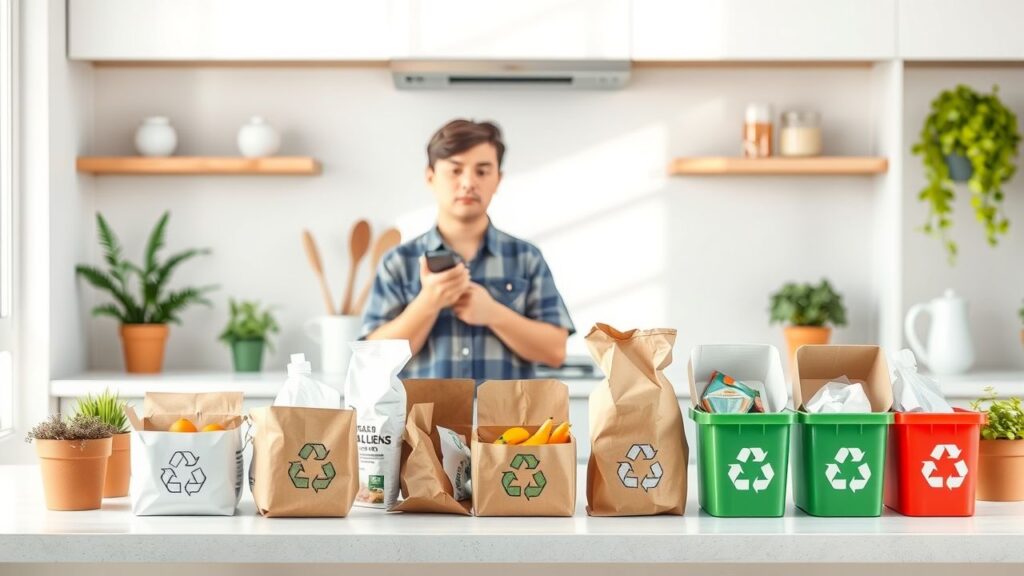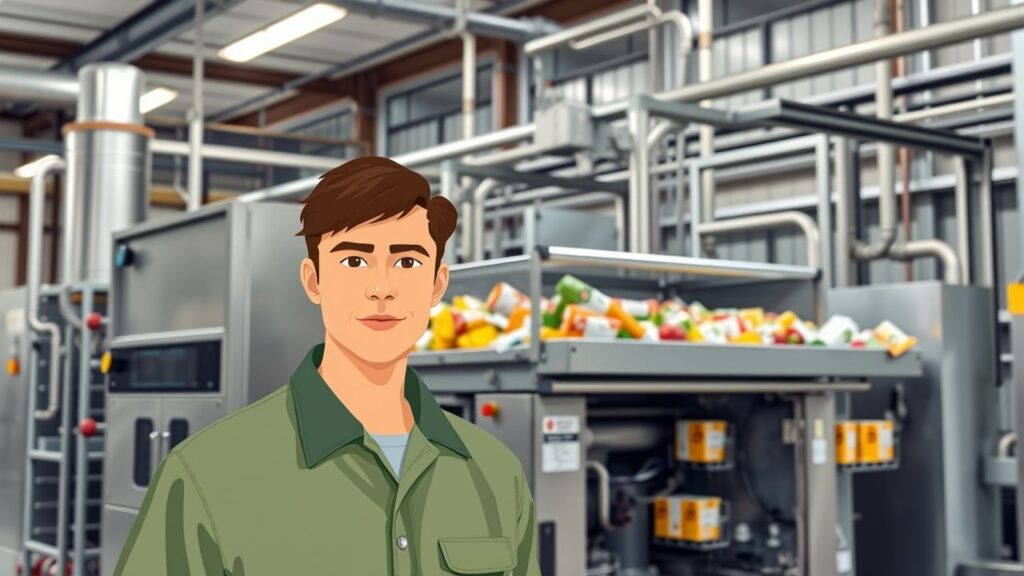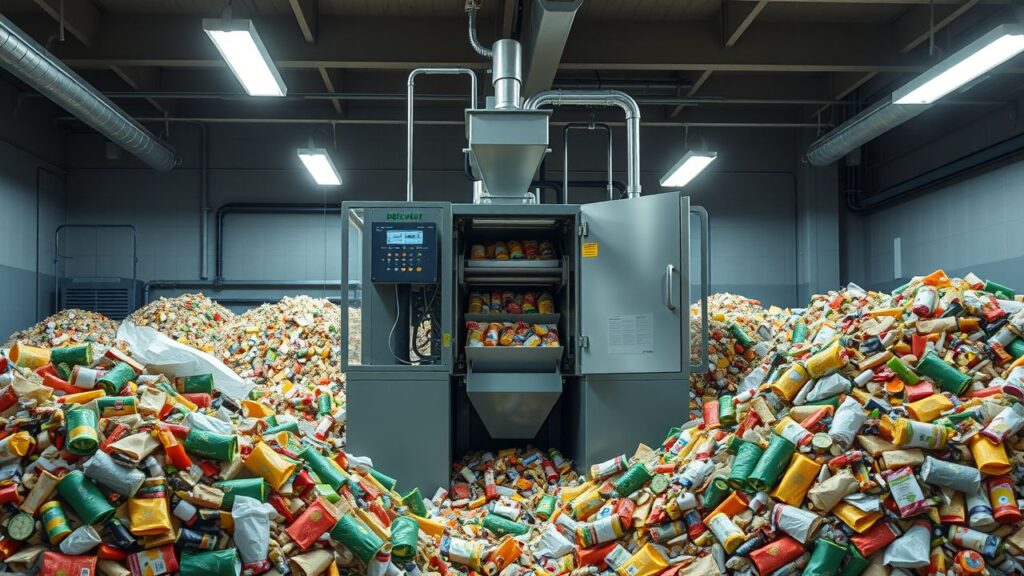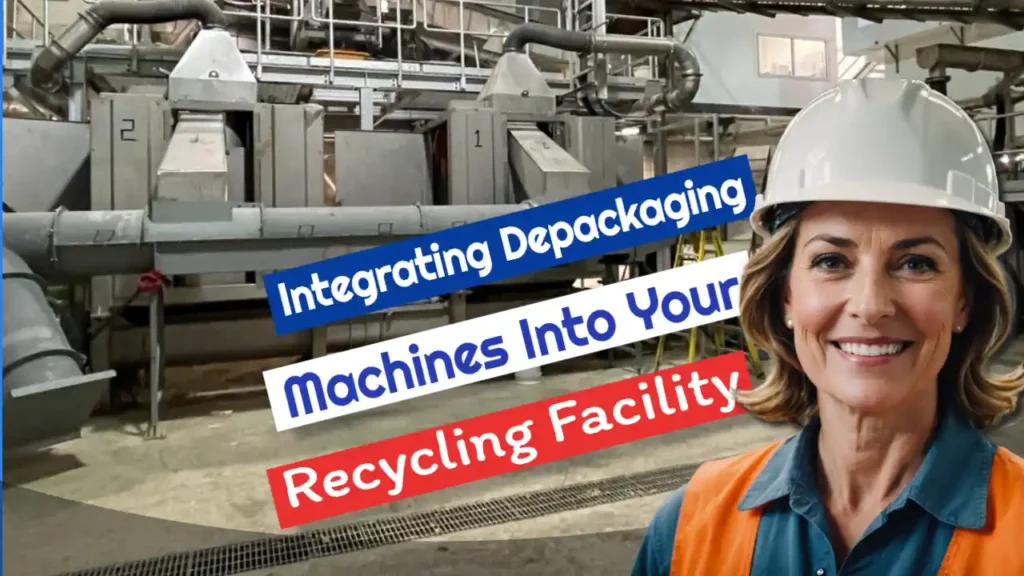Do you struggle with dealing with food waste? Many people and companies do. It’s messy, costly, and harmful to the environment.
Depackaging is an effective way to manage this problem. Did you know that proper depackaging can cut down landfill waste and boost recycling efforts?
This article will show you how to minimise contamination through smart depackaging strategies. You’ll learn about techniques, technology, and real-life success stories in reducing food waste…
Stay tuned!
Key Takeaways
- Proper depackaging can reduce landfill waste and improve recycling. For example, Senate Bill 1383 in California targets a 75% reduction in organic waste by 2025.
- Technology like the Turbo Separator and AI-powered robotics aid efficient depackaging. These tools enhance sorting accuracy and lower contamination risks.
- Effective mechanical separation keeps organic material clean while separating packaging. Innovative systems also support composting and renewable energy production through anaerobic digestion.
- Depackaging faces technical and economic barriers. High initial costs for equipment can deter smaller facilities, but collaboration among stakeholders helps solve these issues.
- Successful case studies include London’s municipal program using mechanical separation and private companies like Denali improving efficiency with advanced systems.
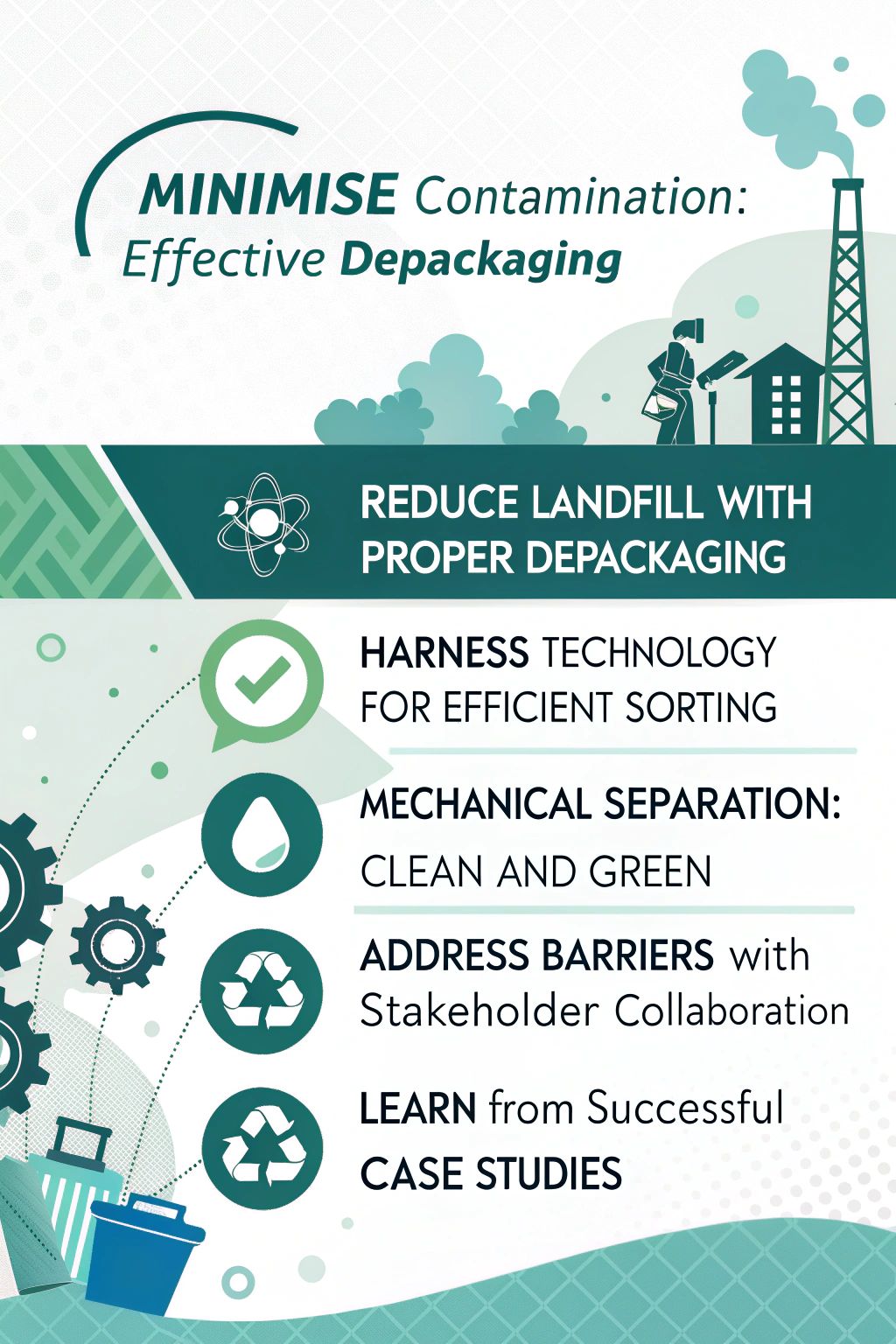
The Importance of Depackaging for Waste Reduction
Depackaging reduces waste that ends up in landfills. It makes recycling more efficient by separating non-biodegradable materials from organic waste.
Reducing landfill waste
Reducing landfill waste is critical. It helps protect the environment and saves money on tipping fees. Senate Bill 1383 in California aims for a 75% reduction in organic waste disposal by 2025.
This law pushes us to improve our waste management strategies.
Effective depackaging separates organic materials from non-biodegradable packaging. Companies like Scott Equipment offer solutions with their Turbo Separator line. Using these tools, we can divert more food waste from landfills, turning it into valuable resources through recycling and composting processes.
Enhancing recycling efficiency
Less waste in landfills leads to better recycling. Depackaging plays a key role here. Industrial-scale depackaging machines process 50-200 tons of packaged organic waste per day, ensuring cleaner recyclables.
These machines remove unwanted packaging materials from organic content, making it easier to recycle plastics and paper.
The Turbo Separator by Scott Equipment Company separates over 99% clean organics suitable for composting. This boosts the quality of recycled materials and reduces contamination in mixed waste streams.
Advanced separation technologies improve sorting accuracy, which results in higher recovery rates at recycling facilities. Enhanced transparency helps companies maintain a positive brand image while supporting environmental sustainability efforts.
Key Techniques in Food Waste Depackaging
Effective depackaging is crucial in managing food waste. Various methods like mechanical separation and biological processes can help separate useful materials from waste efficiently.
Mechanical separation
Mechanical separation is vital for food waste depackaging. It uses machines to sort and remove packaging from organic material. These systems keep the quality of organic materials high while separating them from non-organic items, like plastic packaging.
Modern machinery breaks open containers without creating microplastics. This enhances processes such as anaerobic digestion (AD) and integrated vegetative composting (IVC). One common tool is a trommel screen, which sifts through materials efficiently.
Mechanical methods make recycling simpler and safer by reducing contamination risks.
This method ensures high-quality resource recovery, says an expert in sustainable waste management.
Biological treatment processes
Biological treatment processes use natural systems to break down organic waste. These methods help reduce contamination and produce clean by-products.
Anaerobic digesters play a key role here. They convert food waste into biogas and renewable energy, making the process environmentally friendly. This also reduces methane emissions from landfills, helping fight climate change.
Technological innovations boost efficiency in biological treatments too. Advanced depackaging systems sort out non-organic materials before digestion, enhancing operational flow. These methods ensure compliance with waste management regulations while promoting sustainable practices.
Let’s move on to discuss technological innovations in depackaging…
Technological Innovations in Depackaging
Today’s depackaging technologies improve waste management. From automated sorting to advanced separation, these innovations make recycling more efficient.
Automated sorting systems
Automated sorting systems transform waste management. AI-powered robotics handle tasks once done by manual labour, reducing costs and increasing efficiency. These robots sort waste with precision, which cuts down on contamination.
Using cyclonic separation technology, systems like the Twister Universal Depackager streamline processes even further. Such innovations support sustainable biogas production while keeping harmful materials out of landfills.
Modern depackaging technology reduces reliance on manual labour.
Advanced separation technologies
Advanced separation technologies make depackaging efficient. Seditank technology removes microplastics, sand, and grit from waste. This means cleaner compost for use in farming.
Another tool is the Turbo Separator. It speeds up the process of removing packaging from organic food waste. These high-tech systems save labour costs and improve the quality of organic materials.
Next, let’s explore how to optimise plastic depackaging and recycling processes….
Optimising the Plastic Depackaging and Recycling Process
Plastic depackaging and recycling need smarter methods. Focus on front-end design for recycling. It improves the recovery value of plastic packaging by 80-90%. Stronger designs mean less waste ending up in landfills.
Innovative technology is key. Automated sorting systems find and separate plastics quicker. Chemical recycling can handle types that mechanical processes can’t manage well. These methods complement each other, boosting efficiency in materials recovery facilities.
Encourage government regulations to support these improvements. Changes in consumer behaviour help foster a circular economy too. The combination saves resources and reduces waste products effectively.
Reducing landfill diversion through better strategies ensures sustainable practices in the recycling industry… making way for a cleaner future!
Challenges in Food Waste Depackaging
Food waste depackaging faces many obstacles. Technical barriers and economic hurdles often complicate the process… leading to increased costs and inefficiencies.
Technical barriers
Technical barriers in food waste depackaging are significant. High initial costs for depackaging equipment can make adoption difficult. Smaller facilities often struggle with these expenses.
Regulatory issues also hinder progress. Different regions may have varying rules on food packaging and recycling, complicating compliance efforts. There is a risk of contamination during the process that needs strict management.
Effective collaboration between stakeholders is key to overcoming technical challenges.
Need cooperation from food producers, recyclers, and regulatory bodies to create seamless processes.
Economic hurdles
The cost of depackaging equipment is high. This initial investment can strain budgets for many facilities. But, over time, these costs may be offset by lower landfill fees and revenue from recyclable materials.
Regulatory challenges also add to the economic hurdles. Meeting compliance requirements often needs extra resources and staff training. These obstacles make it hard for smaller businesses to adopt effective depackaging strategies quickly.
Case Studies: Successful Depackaging Initiatives
Many cities and companies are finding ways to reduce waste. They use methods like trommel screens and screw conveyors to separate materials effectively.
Municipal programs
Cities and towns run many effective depackaging programs. Take London, for example. They use mechanical separation in food waste processing to reduce landfill waste. This helps keep the city clean and green.
In Manchester, automated sorting systems play a big role in minimising contamination. These systems sort out recyclables with great accuracy. This makes recycling more efficient and cost-effective.
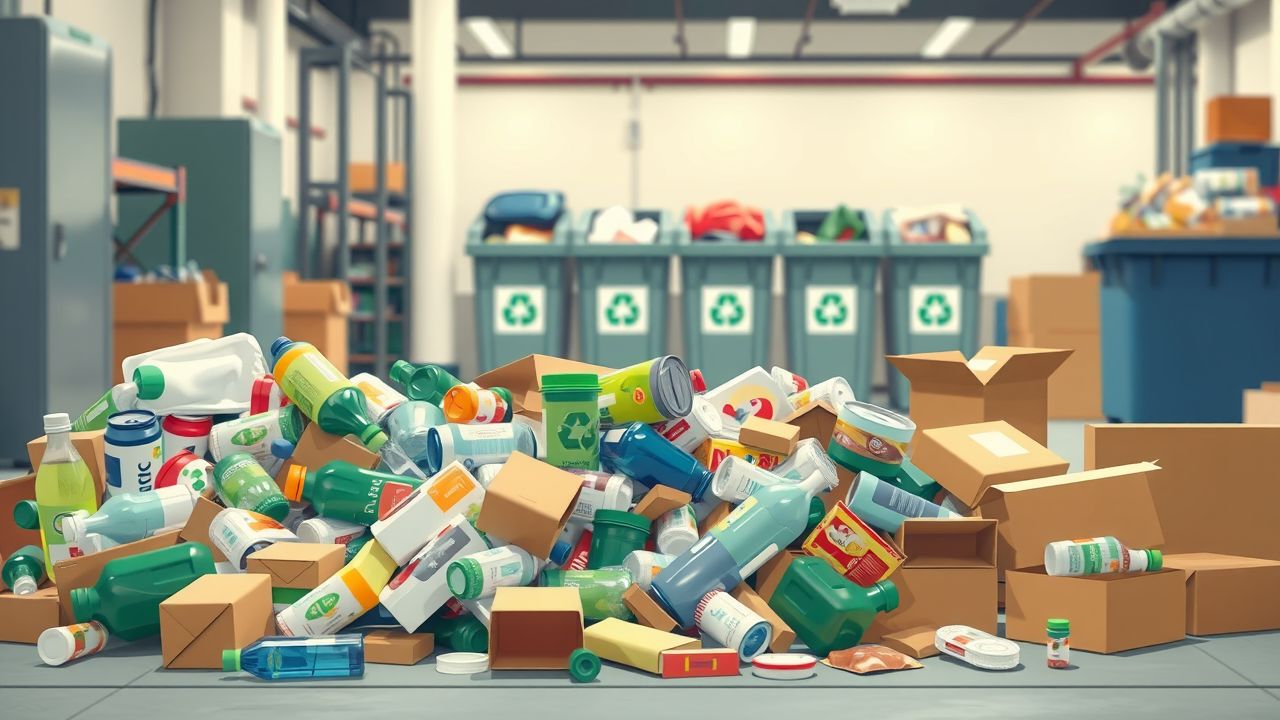
Private sector innovations
Denali’s depackaging solutions bring many advantages. They help companies cut costs and improve efficiency. Denali has shown how effective private sector innovations can be in waste management.
This also helps in meeting regulatory compliance requirements.
Loraas made a major move by implementing a separator and the SG/Gore system for commercial food waste processing. Their initiative maximises recycling efficiency while reducing landfill waste.
Initiatives like these set new standards… leading to more advancements discussed next in “Future Trends in Depackaging Technology.
Future Trends in Depackaging Technology
AI and machine learning are reshaping depackaging methods. These tools can identify and sort materials faster, leading to more efficient recycling.
AI and machine learning applications
AI can optimise waste collection routes. This saves time and fuel, reducing waste disposal costs. Machine learning algorithms classify and sort recyclables more efficiently than humans.
AI-powered robotics also automate sorting tasks at recycling facilities. They can quickly identify items like meat packaging or dairy containers for proper processing. Predictive analytics help decision-making by analysing data on spoilage or contamination risks in food storage.
Policy-driven solutions
Policy-driven solutions play a vital role in reducing contamination during the depackaging process. Implementing strict municipal solid waste segregation policies can reduce microplastics significantly.
These policies ensure that waste is categorised correctly, aiding in more effective recycling and reuse.
Regulations should encourage pretreatment methods that use advanced depackaging techniques. For example, automated sorting systems and advanced separation technologies can increase efficiency and reduce costs.
Policymakers must support adopting these technologies through subsidies or incentives… This will enhance environmental protection and promote sustainable agricultural practices.
*Up next: Conclusion…*
Conclusion
Depackaging helps cut down waste and boosts recycling. Using tools like depackaging separators can make a big difference. They reduce odour, save money, and produce quality compost.
Collaboration is key for success. New tech and education will drive future improvements… A cleaner environment awaits!
For more in-depth insights into enhancing your recycling efforts, read our guide on how to optimise the plastic depackaging and recycling process.
FAQs
1. What are effective depackaging strategies to minimise food contamination?
Effective depackaging strategies include using trommels and augers to separate materials, ensuring proper storage conditions like freezing, and maintaining a clean environment in recycling facilities.
2. How can we prevent cross-contamination during the food manufacturing process?
Prevent cross-contamination by using non-toxic materials for packaging, following strict hygiene protocols, and regularly cleaning equipment like knives used in processing.
3. Why is it important to consider shelf life when preserving food?
Considering shelf life helps maintain food safety by preventing degradation that could lead to foodborne illnesses or spoilage before consumption.
4. What role does corporate social responsibility play in waste recycling?
Corporate social responsibility encourages businesses to adopt sustainable practices such as source-separated organics (SSO) programmes and refuse-derived fuel production from waste.
5. How do technological advancements aid in reducing contamination risks?
Technological advancements improve methods of separating contaminants from organic matter, enhance the efficiency of materials recovery facilities, and support the creation of safe compost piles without chemical fertilisers.
6. Can freezing help preserve the quality of foods while minimising contamination risk?
Yes, freezing extends shelf life by slowing down decomposition processes and reduces the risk of food poisoning caused by improper storage conditions or gas mixtures in fridges.
References
- https://thinkviably.com/resource-library/costs-of-not-depackaging-food-waste/
- https://thinkviably.com/resource-library/what-is-food-waste-depackaging/ (2024-04-29)
- https://wastersblog.com/101429/food-waste-depackaging-methods/ (2022-06-19)
- https://blog.anaerobic-digestion.com/food-waste-separators-for-depackaging/
- https://www.frontiersin.org/journals/sustainability/articles/10.3389/frsus.2022.901885/full
- https://www.mdpi.com/2073-4360/15/6/1485
- https://wastersblog.com/103881/depackaging-for-compost/
- https://relondon.gov.uk/wp-content/uploads/2021/02/Tackling-contamination-project-case-studies-final.pdf
- https://aiforgood.itu.int/revolutionizing-waste-management-the-role-of-ai-in-building-sustainable-practices/
- https://www.researchgate.net/publication/347940133_Artificial_Intelligence_and_Machine_Learning_in_Waste_Management_and_Recycling (2024-10-22)
- https://www.sciencedirect.com/science/article/pii/S2095809923004782
Discover more from IPPTS Depackaging Equipment Insights
Subscribe to get the latest posts sent to your email.

